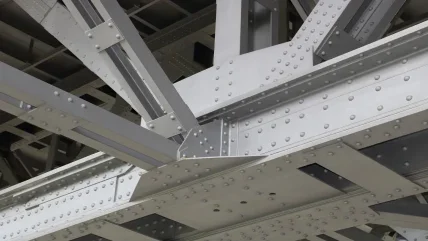
As we’ve explored in earlier columns, lifting beams are designed for a bending moment whereas spreader beams that incorporate top rigging are designed for a compressive load. Manufacturers tend to make more lifting beams than spreader beams.
A lifting beam has a lower headroom because of the absence of top rigging, as required by a spreader beam. It is for this reason that many people think of spreader beams being used outside where headroom or vertical clearance isn’t an issue. Spreader beams are used in oneover- two configuration to create four pick points, but lifting beams are often used to create more than two pick points, when the load is required to be equally balanced and stable.
Many lifting beams are bespoke and provided with lifting points for a specific type of load. However, there are many beams that are part of standard ranges, designed for when an object must be lifted by three or more points that are not in line and headroom remains a consideration; we call them multi-point lifting beams.
Despite the fact that such products exist, we continue to see applications in industry that might not be as safe or efficient had such a beam been utilised. For example, sometimes a three- or four-leg sling is used, regardless of the fact that the connection points may not be designed to take loads at an angle. Further, the slings may also interfere with part of the object being lifted.
Given the commonality of loads that meet the criteria, we often suggest the use of Y-, T-, or H-shaped lifters, in other words those that connect to three or four lifting points.
We have a standard range we call Model 27, but such beams are manufactured by a variety of companies globally. Our sales team has been involved in provision of such equipment, notably for aerospace projects recently
FOUR-POINT BEAMS
A four-point (or H-shaped) lifting beam might be used with two cross beams above or below a central beam, depending on the application. Four-point lifting beams can be used with multiple bails with two or four hoists to increase lifting stability, with adjustable bails when load-levelling capability is required along the length of a load, or with adjustable spread when adjustability in both length and width are required. Similarly, a Y- or T-shaped lifting beam might be used in various configurations, depending on the load.
There are a handful of companies globally that make adjustable spreader beams (remember the differences between these and lifting beams). If a four-point or rectangular spreader (not lifting) frame is required for an application, users simply need to remove the end fittings and add corner sections – the struts are the same. All such spreaders utilise standard shackles that are available from all major manufacturers. The manufacturer specifies top sling lengths, while the load determines lower rigging.
To select the right multi-point lifting beam or adjustable spreader frame, it is important to provide a specialist lifting equipment provider with detailed information about the above-the-hook technologies, load, centre of gravity, and wider application environment.
Centre of gravity, especially, is always an important consideration; stability is a concern with connecting to the load below centre of gravity. Weight of the beam must also be considered with the crane capacity. Also think about if you are lifting just one object or a range of objects requiring an adjustable unit.
Remember, below-thehook equipment comes in all shapes and sizes but often a specific type represents the best fit.






